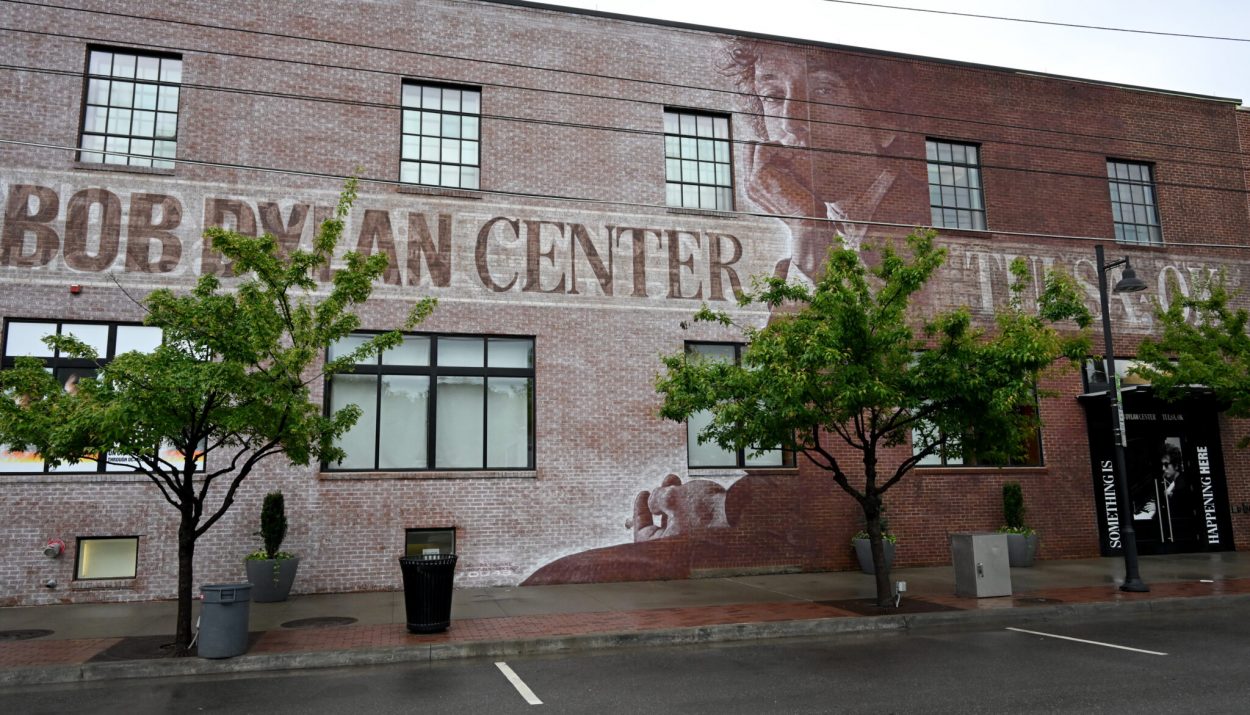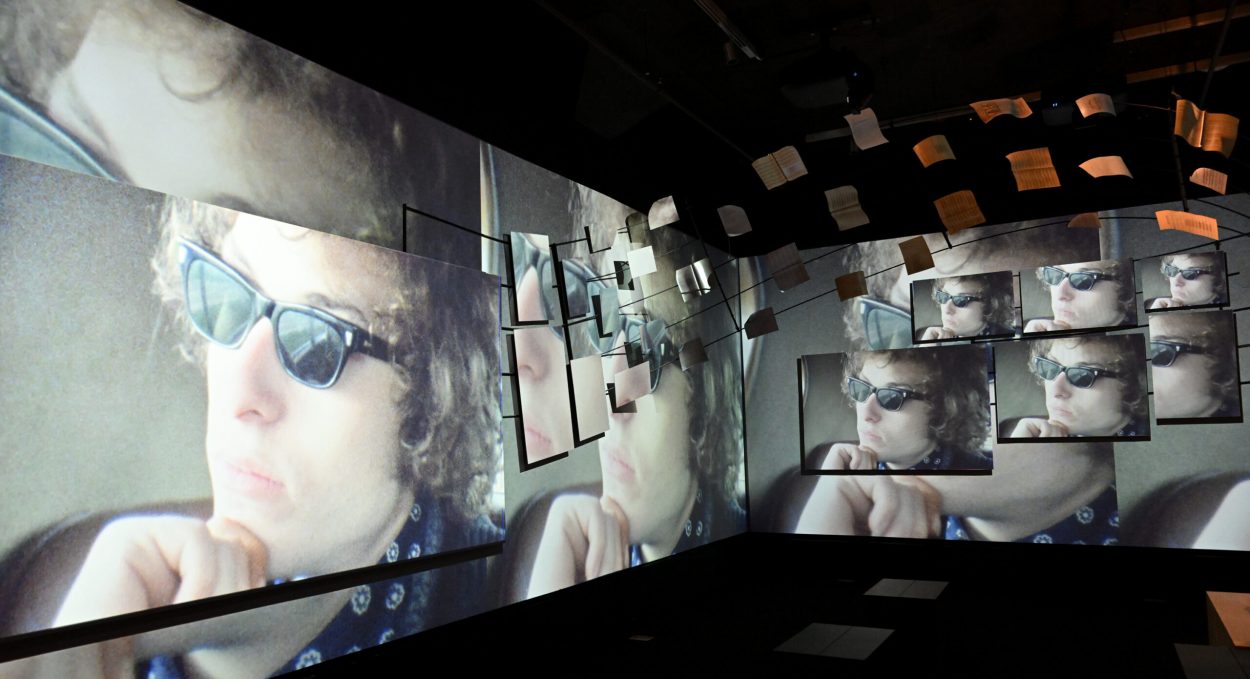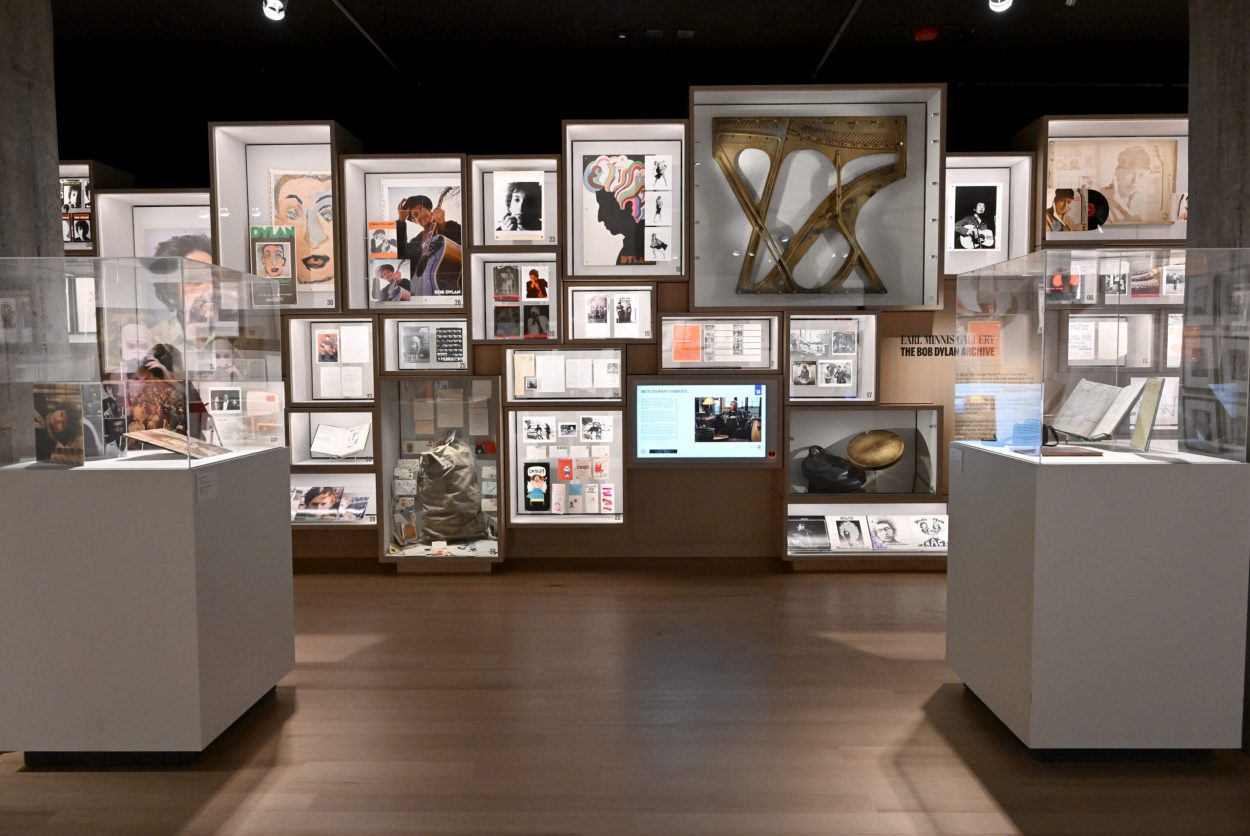Bob Dylan was always famously stubborn about decoding the meaning behind his work, which at this point speaks for itself: hundreds of convention-defying anti-war anthems and American classics have landed him a Pulitzer Prize and the Nobel Prize, and permanently enshrined him as one of history’s greatest living songwriters. It’s no surprise, then, that he had virtually no involvement in the creation of the Bob Dylan Center, a $10 million facility in Tulsa that seeks to shed light on the elusive music legend’s songwriting process and past.
The new space, which opens today, has amassed an exhaustive archive of 100,000 objects—among them unopened notebooks of workshopped lyrics, a duffel bag of fan mail, and rare recordings—that peel back the layers of Dylan’s illustrious career. The full archive is only available to credentialed researchers, but fans will find something to love within the 75-foot-long interactive archive wall, the Cabinet of Curiosities. There, wooden boxes display career highlights, including Milton Glaser’s 1967 poster showing Dylan with kaleidoscopic hair. Elsewhere, a mock studio lets visitors mix Dylan’s original recordings of classic songs or jam out to a digital jukebox of 162 tracks chosen by Elvis Costello.



